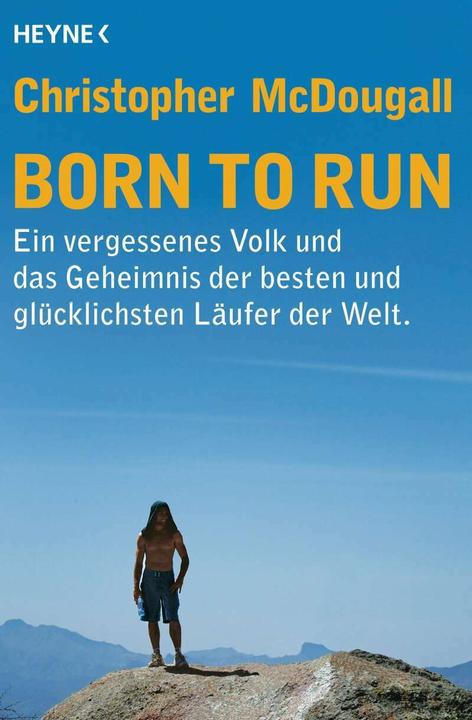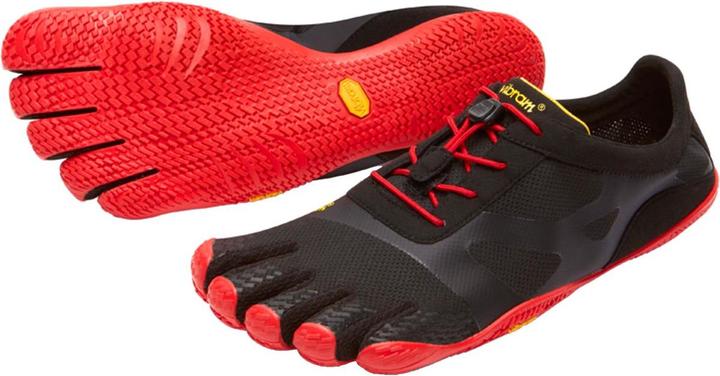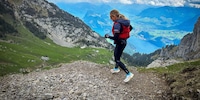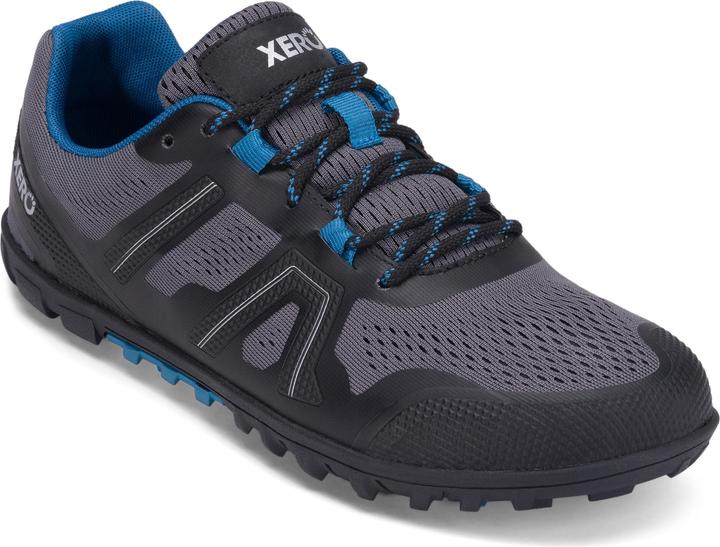

Three weeks until my half marathon – why I’ve started running in barefoot shoes
Super cushioned shoes have never been my thing. I like to run with the motto «less is more» in mind. So, I’m putting minimalist trail running shoes from the brand Xero Shoes to the test.
In the three weeks until the Lake Halwill half marathon on 14 October, I’m focusing on fine-tuning. I want to improve my running style – and switching to the Mesa Trail II barefoot shoes in the hope they’ll help. I certainly won’t run the 21 kilometres in them, but I want to know if they’re a good training tool for easy runs.
I’ve been interested in the topic of barefoot running for a very long time. We’ll rewind and take a look at the history of barefoot running first. But if all you’re interested in is my experience with the Mesa Trail II, you can scroll right down to the review. But first, a disclaimer: just under six months ago, Xero Shoes and the authors of Born to Run entered into a partnership. After months of testing and running in Xero shoes, running coach Eric Orton and avid runner and journalist Christopher McDougall concluded that this shoe was a good fit – literally, and in terms of their running philosophy. So keep that in mind as you read on.

A trip to Mexico and the history of barefoot running
It’s been just under fifteen years since Christopher McDougall captured many runners’ hearts – including mine – with his book Born to Run.
The story of the Tarahumara, also called Raramuri, inspired me. The runners of this indigenous population group in the Sierra Madre Occidental, a mountain range in western Mexico, put on nigh unbelievable feats of endurance in handmade sandals made of rubber and yarn. And I’m no less fascinated by the stories and adventures of Christopher McDougall and running coach Eric Orton. With a wild, colourful group of runners, they raced through the sweltering heat of the barren Copper Canyon in what’s said to be an area of Mexico dominated by drug cartels.
The book inspired not only me, but an entire generation of runners and quickly became a New York Times bestseller. Less is more became my credo. Like many others, I switched from well-known brands to barefoot running shoes. The Vibram Five Fingers was a particularly popular model. I myself have three pairs of it that I still wear.
The pendulum swings back and forth
Now, because just about every movement triggers a countermovement, the barefoot trend didn’t last long. Running shoes with thick cushioning, high stability and plenty of support for the foot became the norm. Brands like Hoka, Adidas, and On rely on hardcore cushioning in some of their models.
But now – true to the principle of movement and countermovement – barefoot shoes are coming back into fashion. Born to Run 2 being published a few months ago highlights this trend.

Born to Run 2: The Ultimate Training Guide
English, Orton Eric, McDougall Christopher, Christopher Orton Mcdougall, 2022
Like many topics, barefoot running is controversial. For some, it’s the ultimate natural, healthy, fast and injury-free running style; for others, it’s a surefire way to destroy your tendons, ligaments and joints. Science also disagrees on whether barefoot walking prevents injuries in cultures where shoes are normally worn. A lot depends on whether the runners are used to walking barefoot in everyday life as well as how strong the foot and supporting apparatus of muscles, ligaments and tendons are.
On the way to becoming a forefoot runner
I like to run barefoot or in Skinners. I recently also started working out my feet on the Blackboard. To slowly go from a heel runner to a forefoot runner with my stronger feet, I jog in barefoot shoes every now and again. Due to the lack of cushioning in the heel area, barefoot shoes tempt you to walk more on your midfoot or forefoot. When your heel lands on hard ground without padding, it can quickly become painful. With minimalist shoes, I get direct biofeedback on my running style, all without expensive technology.
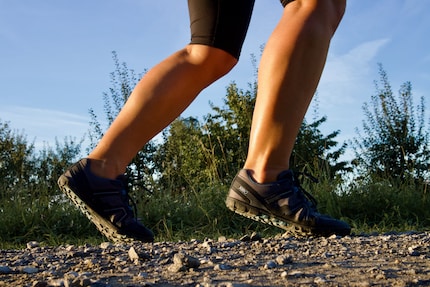
Source: Siri Schubert
Minimalist and barefoot shoes have some characteristic features. They generally have a wider toe box that allows the toes to move and offers the foot a wider base. This helps your balance. In addition, the shoes are very flexible and provide no arch support. They’re flat with no slope («drop», in technical jargon) between the heel and forefoot.
The Mesa Trail II from Xero Shoes in practice
Taking a barefoot shoe into the mountains takes a healthy dose of confidence. If you break your ankle there, you may have to call the rescue service. That’s why I’m first testing the Mesa Trail II shoes while jogging on farm roads, forest trails and paths padded with wood chips.
From the get-go, I’m thrilled with how light and natural the shoe feels. Mind you, its weight of 215 grammes (according to my kitchen scale) at size 39 isn’t super light, but still on the lower end of running shoes. Since it is sturdily built, featuring a 3.5-millimetre tread and stone protection on the toes, the weight is quite acceptable. The wide toe box is especially important to me. I have wide feet, and if they feel cramped in a shoe, I can’t run in it – no matter how good it is in other aspects.
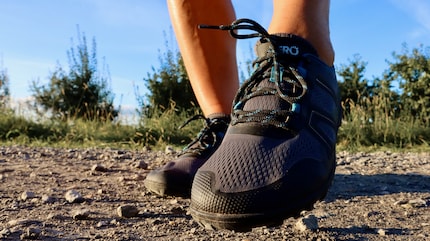
Source: Siri Schubert
Lightly padded and flexible
The Mesa Trail II has a removable insole, which I leave in for the first few runs, but then remove without really feeling any difference. The trail running shoe is equipped with a midsole that’s a few millimetres thick to provide a minimum of cushioning, especially for downhill running. Even with the total of about nine millimetres of cushioning (outsole, midsole and removable insole), I can feel the ground well. Feeling the stones, roots and other unevenness increases self-awareness and thus balance. It pleases my «sole». Since my foot lands flat on the ground in the fairly wide shoe, the risk of twisting my ankle feels lower than with more thickly padded shoes.
Inside, the shoe is lightly padded at the heel and tongue, which prevents slippage and blisters. On the sides, there are reinforced elastic straps around the midfoot area that provide additional support. I appreciate this especially during quick changes of direction, like when dodging roots or stones.
The shoe is very flexible overall. When I run, I feel like there’s nothing slowing down the natural movement of my foot. The upper is light and airy, so my feet don’t overheat. However, the mesh fabric isn’t waterproof. After running on a dewy meadow, my feet were wet. I’m not too bothered by this, though, as the shoes are quick to dry.
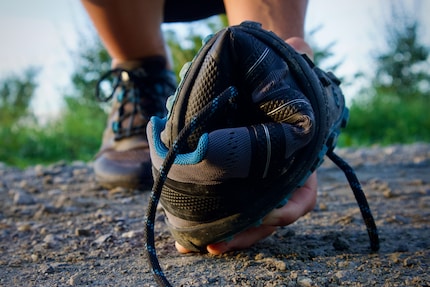
Source: Siri Schubert
I really like the sole with the 3.5-millimetre tread. Even on moist surfaces, the grip is good. The toe protection made of rubber is also useful. It prevents the shoe from tearing if I get caught on a branch or root.
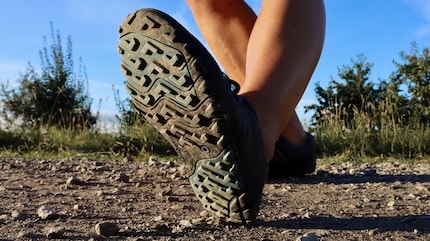
Source: Siri Schubert
Summary: everything you need, but no more
By now, my feet are well trained enough to do an easy 45-minute run in the Xero shoes. In the beginning, however, you should approach barefoot running slowly. Start by going for a walk or run in the shoes for just a few minutes, otherwise the risk of injury increases due to the low cushioning. Gradually, however, your feet will become stronger – and then it becomes fun to run on uneven ground with a light shoe in a relaxed and natural way.
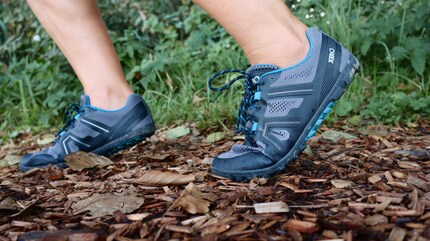
Source: Siri Schubert
I like the Mesa Trail II shoes. They have everything you need to be on the dirt road, but no more. Of course, I do still want to test how they fare in the mountains. But for easy runs on gravel, forest and country roads with only a few metres of change in altitude, I think they’re great. They’ve definitely earned a spot in my half-marathon prep.
Header image: Siri Schubert
Research diver, outdoor guide and SUP instructor – I love being in, on and around water. Lakes, rivers and the ocean are my playgrounds. For a change of perspective, I look at the world from above while trail running or flying drones.
